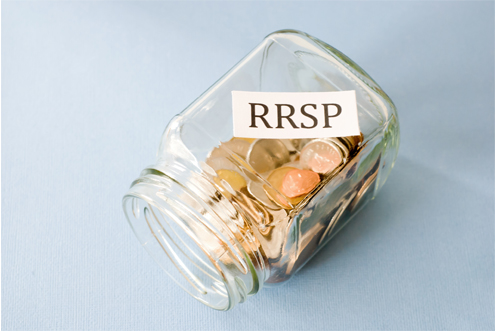The ABCs of RRSPs: The Three Things You Need to Know

Should you contribute to a Registered Retirement Savings Plan (RRSP)? With Tax-Free Savings Accounts (TFSAs) becoming more popular, there’s debate among financial experts on the pros and cons of each type of account. But RRSPs are still an essential tool for saving for retirement, provided you use them wisely. You still have time’the RRSP deadline for contributions eligible for a 2014 tax deduction is March 3, 2015. But before you jump in, read these three guiding principles for using RRSPs successfully.
Principle #1: Contribute
You can’t start a journey without taking that first step. So open up an RRSP if you don’t already have one. Next, contribute regularly! Money contributed to an RRSP grows tax-free inside the plan, and gives you a tax-deduction for the year of contribution. In effect, you are contributing before-tax dollars that will compound and grow free of tax. You’ll be taxed on withdrawals when you collapse the plan (usually at retirement), but your tax rate will likely be lower than it is in your peak earning years.
You can contribute 18% of ‘earned income’ to an RRSP every year to a pre-set maximum. For 2014, the maximum contribution limit was set at $24,270 (for 2015, it is set at $24,930). If you can’t contribute your maximum in a year, contribute as much as you can.
Make monthly contributions, and start now! The sooner you start tax-sheltered compounding in your RRSP, the better. Start off with small amounts, gradually increasing as your salary rises. Remember the magic of compounding. Even a $500 monthly investment compounded monthly at a relatively conservative rate of 6% will grow to $500,000 in 30 years.
You can also increase your contribution in a given year by using ‘contribution room’ you’ve carried forward from previous years. And you should also reinvest your tax refund to increase your nest-egg.
Looking for ways to make RRSP contributions? Here are some favourites:
Automatic deposits. Arrange with your bank or your employer (if they’ve set up a group RRSP) to automatically deposit funds to your RRSP with every paycheque. Contributing through the year gets your money invested and compounding that much sooner.
Severance payments. If you received a severance payment in 2014 (and you haven’t already blown it on something), use it to make an RRSP contribution. That way, you’ll shelter some or all of the severance amount from income tax.
Inheritances. You may have received a bequest during the year. If it’s a substantial sum, use at least some of it as an RRSP contribution. Bequests themselves are generally not taxable as income, but any investment income from that bequest is. So put some of it into an RRSP, where investment growth is tax-sheltered until your RRSP matures.
Contributions in kind. If you have qualifying investments outside an RRSP in a non-registered account, consider transferring some of them to an RRSP. Their current value will be deemed to be the contribution amount for tax purposes. If you make this type of contribution, keep in mind that there will be a ‘deemed sale’ of the asset, and 50% of any capital gain may be taxed. However, the upside is that you’ll get a tax deduction on 100% of your contribution. To make contributions in kind, you’ll need a brokerage account or have a self-directed RRSP that lets you pick and choose your own investments.
Should you borrow? The biggest downside to borrowing your RRSP contribution is that you are leveraging your investment. It makes no sense to put borrowed money into a safe, interest-bearing investment like a GIC, because it earns less than the cost of your loan. But if you invest in equity investments, either directly or through a mutual fund or ETF, you run the risk of magnifying any losses that may occur. In other words, the value of your investment may end up being less than the value of your loan’never a good situation!
Another minus is that an ‘RRSP loan’ is still a loan’a debt with interest payable. And you must pay the lender (usually your friendly neighbourhood bank) the money when it’s due, regardless of what happens to your RRSP investment or anything else. People who jump into RRSP loans without thinking about the effect on their cash flow are usually in for a rude awakening.
Speak with your financial advisor or qualified planner about more complex RRSP contribution ideas, such as contributions in kind or RRSP loans.
Principle #2: Invest
Putting your RRSP funds in a savings account or a GIC might sound ‘safe,’ but that strategy fails to make optimal use of the RRSP’s most powerful feature’long-term tax-sheltered compounding. RRSPs may hold a wide variety of investments. And with the right asset mix, you can boost your investment return far beyond what’s offered by the meagre returns on savings accounts or GICs. Here’s a quick list of what the Canada Revenue Agency says are qualified RRSP investments. For more detail, check the CRA website:
- Bonds
- Exchange-listed securities
- Exchange-traded funds (ETFs)
- Mutual funds
- Options
- Money or cash deposits
- GICs
- Other qualified investments include annuities, mortgages, certain shares of small business corporations and venture capital corporations. You may also put money into investment grade gold and silver bullion, coins and certificates.
Principle #3: Know yourself and invest wisely
For many of us, an RRSP is our only source of retirement income apart from the Canada Pension Plan. And while you can invest in just about every type of asset class, an RRSP is not the place to speculate on junior mines, high-tech start-ups, commodities or other risky and volatile assets, even though they might be qualified investments as seen in the list above. Remember’tax benefits like the dividend tax credit, the capital gains tax exemption and the ability to offset losses against gains are lost within an RRSP.
Aside from not contributing to an RRSP at all, the RRSP investment choice is where most people go astray. Most of us tend to overestimate our capacity to deal with market volatility and take investment losses. So be realistic about your own tolerance for risk (and ignore what your neighbour, uncle or barber thinks’they generally exaggerate!). Work with a qualified financial planner to allocate your RRSP assets according to a plan determined by your personal goals and a realistic assessment of your tolerance for risk.
Image of RRSP from Shutterstock.














